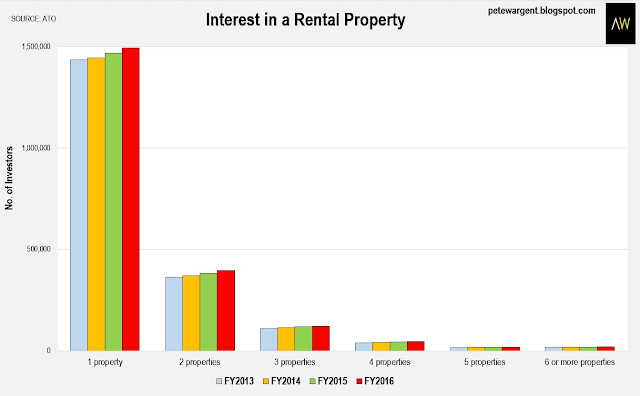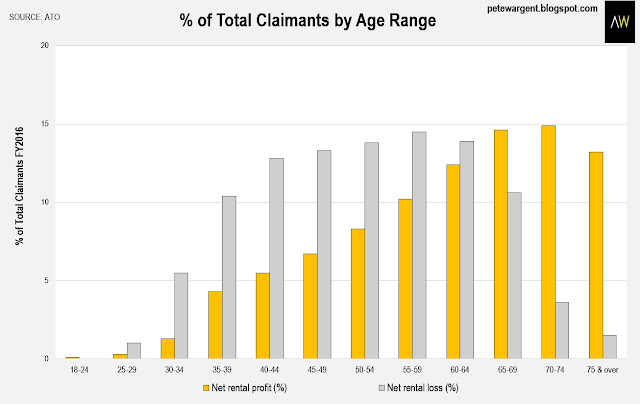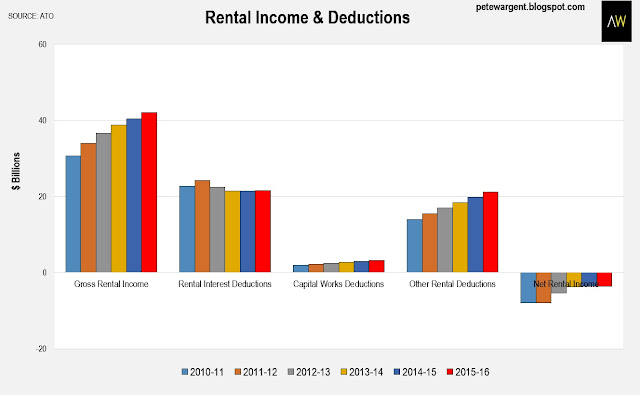71% of landlords owned a solitary investment property: Pete Wargent

Data released by the Australian Taxation Office (ATO) showed that just shy of 2.1 million Australians declared an interest in a rental property for the 2016 financial year.
The number declaring a net rental loss to the tax office has declined over the past four years of available figures, mainly due to lower mortgage rates.
Note that under Australian taxation law it is quite possible for an investor to declare a net rental loss to the tax office yet be in a positive cashflow position, in part due to depreciation and capital works deductions.

Property investment in Australia is mainly the purview of the Mum and Dad investor, with more than 90% of investors owning just one or two rentals.
71.3% of landlords owned a solitary investment property.

Who uses negative gearing? A broad range of people, including just over 796,000 with a taxable income of under $80,000, and about 495,200 with a taxable income of above $80,000.
As you might expect, wealthier negatively geared households tend to borrow more and incur greater net rental losses, at least initially.

The beneficiaries of negative gearing are often in the younger cohorts, with the net rental profits tending to swell later in life.

Similarly, the size of net rental profits typically increases for the older cohorts as they move into their retirement years.

Budget repair happening anyway
In terms of Federal Budget repair, the ATO recorded only a very small change in net rental losses from the $3.6 billion notched in the preceding tax year.
Note that any potential Budget savings from negative gearing rule changes would relate to tax-effected rental losses (as opposed to net rental losses), negative gearing deductions being a timing difference in principle.
Moreover, Treasurer Morrison has already made sweeping changes to plant and equipment depreciation deductions under division 40, which will begin to take effect from the 2018 tax year, while landlord travel expenses will also be disallowed (to the likely dismay of errant politicians).

The supposed savings from changing negative gearing rules have always been questionable to my mind, especially after lower taxable bank profits, higher public housing costs, and a raft of other factors are taken into account.
Landlord-bashing has become a popular sport in recent years, yet at the same time the average superannuation balance suggests that millions of Australians are basing their financial futures upon drawing the Age Pension.
The Budget balance has improved significantly regardless of late, thanks to a record +431,000 surge in employment over the year to January 2018 combined with a timely boost in export prices.
Meanwhile at the national level the housing market has cooled and investor activity has been comfortably subdued by macroprudential measures.
With thanks to Cameron Kusher of CoreLogic for expertly dicing up some of the above data points by age cohort at lightning speed.